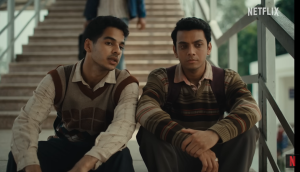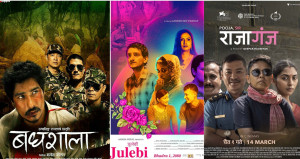Movies
Here’s what these short Nepali films are doing right
This week, the Post examines four Nepali short films that were released last month, discussing their strengths and the lessons that can be learned.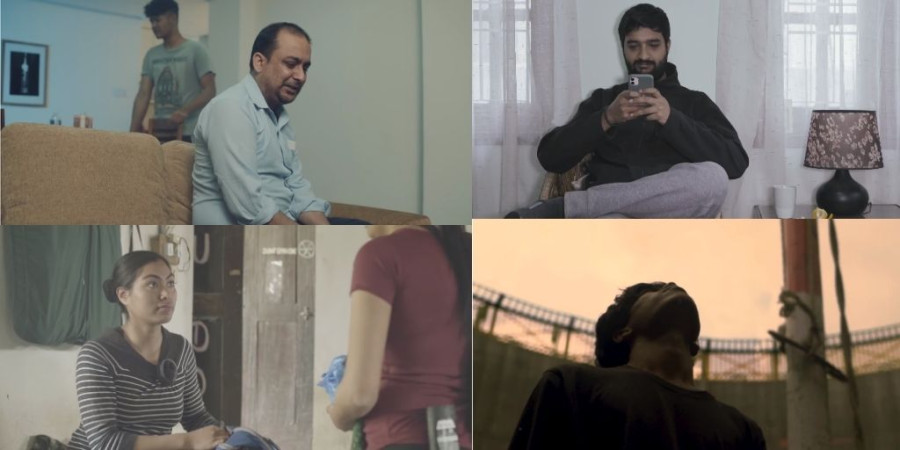
Ankit Khadgi
Cinema over the world has taken big leaps in recent years. However, the same cannot be said for Nepali films. In more than five decades since its inception, the growth of Nepali motion pictures has been slow and mostly unimaginative.
There is no denying that the Nepali film industry still lacks substance and with the pandemic shutting down production and theatres, there is a high probability that the quality of Nepali films will suffer. Having said that, there are some new-age, independent filmmakers who have emerged that have done commendable work, although such works are few and far between.
This week, the Post critically reviews four Nepali short movies released last month on YouTube, discussing their strengths, their shortcomings, and the lessons that can be learned from these movies.
(Editor’s warning: Contains spoilers)
Bojh by Shashank Shrestha

Released on August 19, ‘Bojh’, directed and edited by Shashank Shrestha and written by Yoznaa Thapa Magar is an earnest story of a son who’s angry at his father, a foreign-returnee, for not doing enough effort to hold their family together.
The 11-minute film has a simple story: it shows us a strained relationship between a father (played by Parikshit Bickram Rana) and a son (played by Aadesh Shakya) which begins to heal with an honest conversation where the father owns up to past mistakes. The father’s honesty saves his son from taking his own life.
Like most stories, this film too is written in a symmetrical format, where the plot components are linearly followed. However, the writer, Magar, cleverly deploys her writing skills and plays with common plot elements.
The makers should also be applauded for their masterful use of colours in the story. In the scenes where we see the two characters fighting, the colour tone is dim, which perfectly encapsulates the essence and mood of the scene. Another instance that shows good use of colour is the moment when the father and the son are having a conversation: the colour tone turns bright, reflecting the changing dynamics of the relationship.
Using the characters’ costumes to reflect their mood is a rarity in Nepali movies, and here Shrestha also cleverly uses this filmmaking technique. The father, since he’s calm and composed, is wearing a blue t-shirt. Likewise, the son is wearing a grey t-shirt. Since greys are associated with sadness, it symbolises his mood and mental state.
However, some flaws do compromise the quality of the movie. Since the story is told through dialogues, at times it does seem overwhelming. The makers could have also incorporated visuals or actions to depict the mood at times. Something else that could have been away with was perhaps the ending, as it seemed forced and unnecessary.
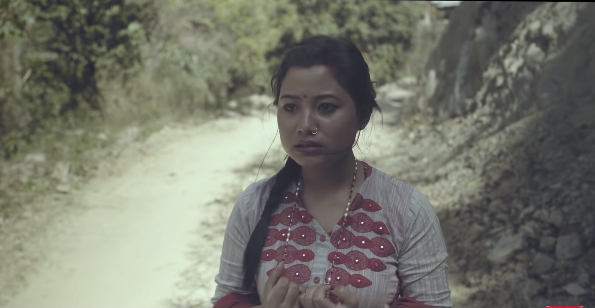
Screened at the 19th Tiburon International Film Festival and the Asian Film Festival, ‘Anumala’ is a story of two women, Anuradha and Nirmala, whose lives change when their paths cross.
When Anuradha, who’s serving in the Nepal Army, returns home to her village from Kathmandu, she finds three strangers in her home. A man, his mother, and his recently married wife, Nirmala. Anuradha’s mother has given the three shelter at her home for the night, she finds. And the twist in the story comes when Anuradha, through a newspaper cutting, finds out that the mother-in-law is a trafficker and the life of the young girl, Nirmala, is in danger.
Based on this premise, the 13-minute-long short film doesn’t depict a story that is new or hasn’t been told before. But what makes it different is its portrayal of a heart-felt human story based on the real plights of Nepali women who have to suffer because of poverty.
The writing is subtle and nuanced and doesn’t create unnecessary tension and conflicts in the movie to manipulate the emotions of the viewers. Rather, through nuanced story-telling, the filmmakers show the power and the strength of people, who, when together, can beat the patriarchal system that treats women like objects.
Likewise, even the title of the movie, ‘Anumala’, which is made from the amalgamation of Anuradha and Nirmal’s names is a clever creative choice, making this movie a great example of how a heartfelt personal story can be told in a nuanced way.
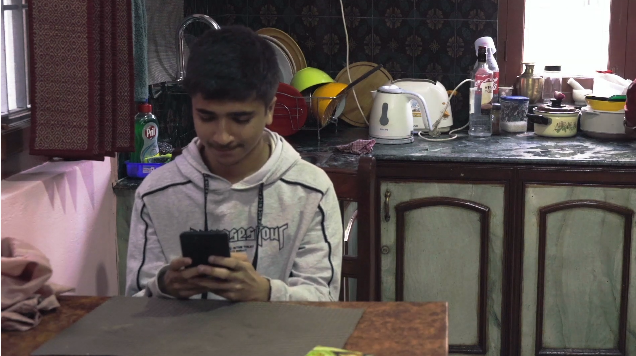
Directed by Pradhanya Devi Yonzon, ‘Timi Ra Ma’ is a seven-minute film that depicts the suppression of desire and freedom to live the way one wants, due to the enforcement of rules by a society that is still driven by cisgender heteronormativity.
Released on August 21, the film begins with a boy getting a random friend request from a girl on Facebook. He accepts the friend request and then like every modern-day story, the two start chatting. After months of chatting, the boy requests the girl to meet him. They decide to meet at Ratnapark; however, the girl ditches the plan at the last minute. In the end, it is revealed that the girl is actually a boy too afraid to come out.
In terms of technicalities and even acting, there’s no room to find flaws, as the film is really well-shot. The performances by the actors are also very authentic. But one thing that should be addressed is the theme it is based on.
While the issue of queer men having to ‘hide’ or not reveal their identity to openly express their emotions might be true, but not every queer man relies on using fake accounts to hide themselves or are interested in straight men. The way a queer person is shown as a helpless person who has to hide and suppress his emotions in this film shows how the film has been made from a cisgender heterosexual lens.
And frankly, aren’t we tired of seeing this kind of representation of queer people? When are we going to see the depiction of queer stories where they aren’t always seen as helpless people, but as strong individuals who aren’t always defined by their sexual identity?
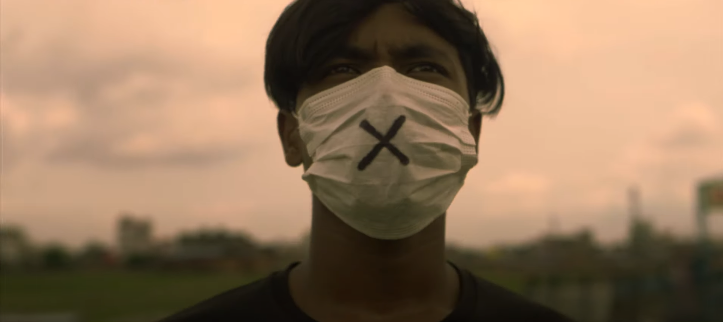
Released on August 4, ‘Demo-Crazy’ by Saliesh Bikram Kshetri (LSM) is probably one of the most innovative Nepali short films of recent times.
Based on a dystopian fictional landscape, where autocracy has reached its limit, the story is a man’s quest for water. The thirst for water makes the man desperate. In a deserted world, set in an amusement park, with a mask covering his face, he searches for water everywhere but his efforts are futile: no one has it.
As his search for water intensifies, he enters the Wall of Death, where he sees other people, also wearing face masks, kneeling in front of a man. Taking the cue from the others, he also kneels in front of the authoritative figure in hopes of getting water.
This authority figure then shouts orders at the people, ordering them to bark like dogs if they want water. Out of desperation, the people start barking at his instruction. But the lead character, however, stands up to the man and encourages everyone else too to stand against the authorities' atrocities. After seeing the people revolt, the authoritative figure fleds the scene.
While the story isn’t the most imaginative, what is commendable is how the story is depicted. By making the common people wear masks, the filmmaker depicts the rise of a totalitarian system that suppresses the voices of people, forcing them to not speak out. Likewise, ‘water’ here in this film symbolises freedom.
If anyone wants to learn how to tell a known-story, then this movie is something that should be seen by all.




 19.12°C Kathmandu
19.12°C Kathmandu








